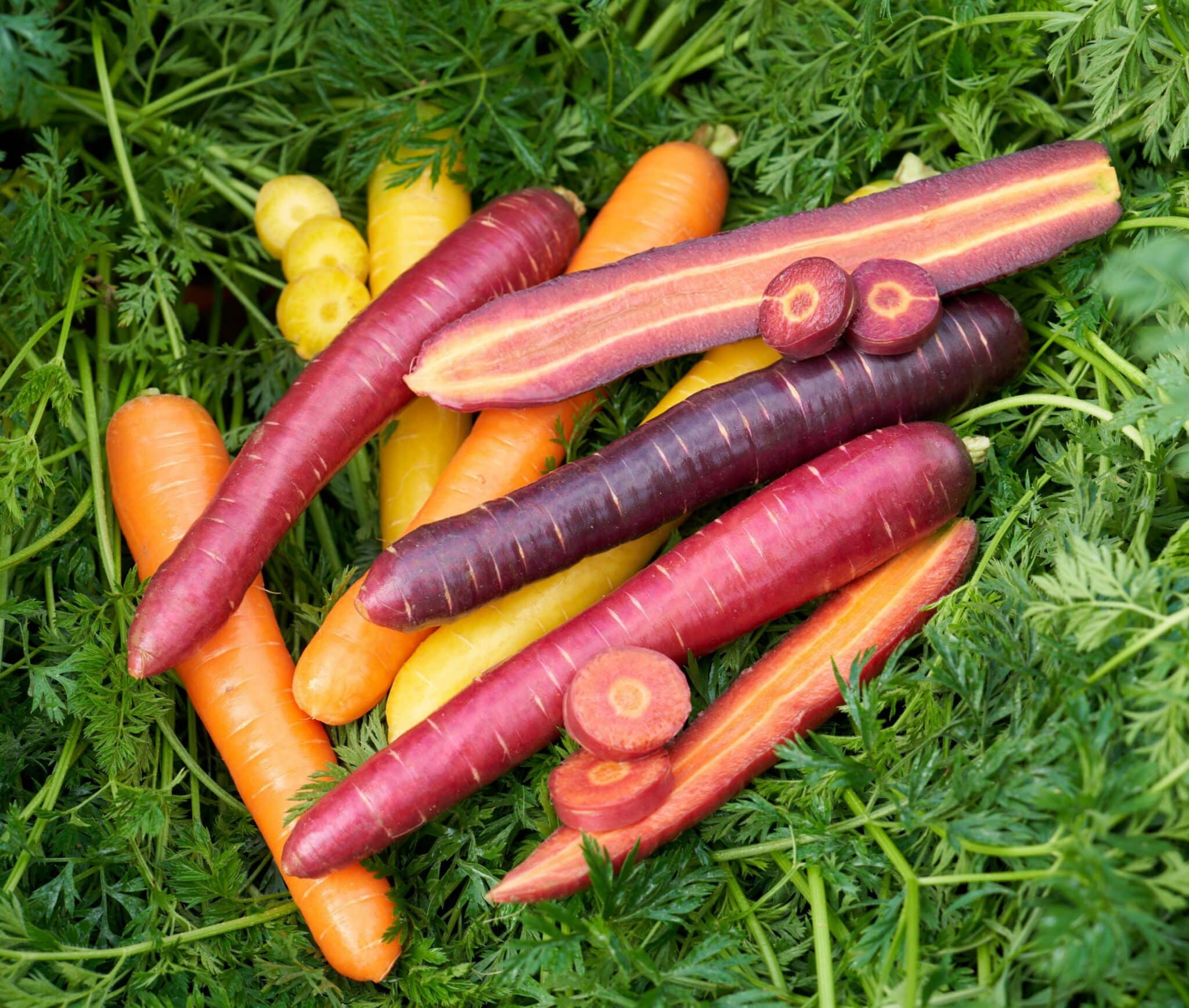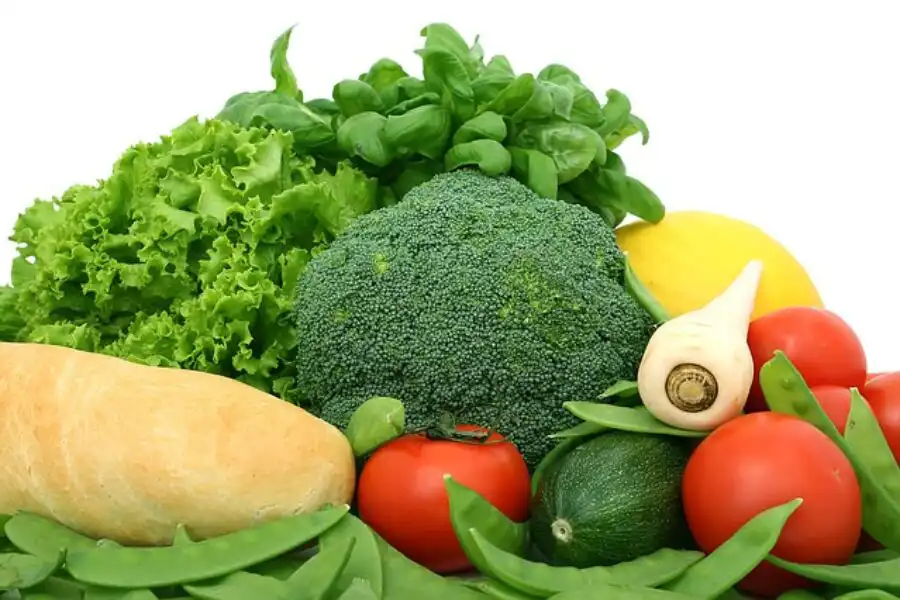It was about 10 years ago when splashes of new colors in fruit and vegetables really began making serious waves at many farmers markets and grocery stores in the United States and other parts of the world.
But as Rick Falconer, U.S. managing director at Rijk Zwaan USA, points out, “if you have access to old seed catalogs, you can fine novel colors in many vegetables. Some varieties that we call heirloom today were on the market years ago.”
For example, Baker Creek Heirloom Seeds offers the Royal Gold Watermelon, which has pink flesh and a bright gold rind. It was developed from a variety now extinct and used to be offered by Willhite Seed of Poolville, Texas, until they discontinued it from their catalog in the 1970s and it almost disappeared.
No one is really sure what kicked off the huge trend of breeding for color about a decade ago. Some point to purple carrots; others to yellow, green and red peppers. But one thing is certain: over the last 10 or more years, a literal rainbow has been introduced to the market. From purple and orange tomatoes to pink potatoes and celery, from white pumpkins and purple cauliflower to yellow kiwis, beets, raspberries and watermelon, the sky is the limit.
It’s brought tremendous excitement to consumers in their own cooking — taking produce from a ho-hum good-for-you, comfortable-but-boring part of our diet to something that’s the star attraction.
As Falconer points out, a plate with purple, green and orange cauliflower florets on it is far more appealing to the eye than just plain white florets, no matter how it is otherwise served.
Jacques-Yves Gueguen, global carrot manager at Vilmorin-Mikado, agrees. Nowadays, he says, “diversity of colors and shapes are sought after to bring fun and beauty into our meals.”
Falconer believes consumer demand for colorful produce trickled down from culinary innovators, from consumers seeing new hues highlighted by these innovators in food news outlets and in high-end restaurants. Lauren Giroux, Johnny’s Selected Seeds director of product selection and trialing, echoes the thought.
“In today’s foodie culture, colored veggies help inspire home chefs and take them closer to feeling like they are Michelin star chefs,” she says.
Novel colored selections have also revitalized the careers and businesses of vegetable and fruit breeding firms, growers and retailers. For those who run farmers markets, farm gate stores and bigger stores, eye-catching displays lead to more sales, and also drive word-of-mouth and social media chatter, bringing more foot traffic through the door.
Giroux also adds that the growing popularity of novel colors also has meant that “produce is now worthy of branding.”
One good example is Del Monte’s pink pineapple, branded as PinkGlow and ’16 years in the making.’ Grown exclusively in Costa Rica and launched in 2020, it’s marketed in North America and beyond for use in cocktails, desserts and more.
In traditional pineapples, the antioxidant lycopene (which gives fruit like tomatoes a pink or red color) is converted by an enzyme to beta-carotene, making the flesh yellow. Pinkglow Pineapples have lower levels of the enzyme.
Nutrition Boost
But with food, especially with today’s health-conscious consumers, it’s not just the new colors on the outside that are attracting people to buy and consume these varieties.
“Consumers also love the new colors because they see them as a way to get more nutrition in their diet,” says Giroux. “The ‘Eat the Rainbow’ advice from dieticians is being promoted as heavily as the Food Pyramid was 20 years ago.”
Most consumers are well aware of the myriad of health benefits that come from polyphenols, the group of biochemicals that includes pigments. Eating these compounds help prevent or treat health conditions connected to inflammation and oxidative stress, including cancer, heart disease and age-related mental decline.
The subgroup of polyphenols called flavonoids includes anthocyanins, which are the antioxidants found in red, purple and blue fruits. Within the yellow hues, the pigment lutein has positive effects on eyesight and the reduction of age-related macular degeneration.
Vilmorin-Mikado’s GOLD NUGGET carrot, as its name suggests, is yellow due to lutein. Lutein also lends this carrot a unique sweet taste, says Gueguen, and that “shows how, in some cases, breeding for colors allows us to discover new flavors.” The company is working to launch purple and pink carrots as well.
Novel colors in carrots, says Gueguen, have really allowed growers and grocery department managers to renew and revitalize the image of this old standby vegetable. “They are looking for originality, segmentation and diversification,” he says. “Especially in sophisticated markets.”
Taste Connection
James Daley, pumpkin breeder & squash pre-breeder at HM Clause (HMC), explains that with a vegetable such as butternut squash, “the visual appeal of the flesh color speaks to a visceral association of vibrant color with good taste. It’s disappointing when a butternut with deep orange flesh color is missing the flavor component and conversely, very satisfying when that color and is associated with excellent taste. It goes without saying that presentation, including color, is part of the experience.”
“For ornamental pumpkin, where we are only feasting with our eyes, the consumer demands a great orange color,” Daley adds.
Indeed, among orange pumpkins, the intensity of the orange can make or break a pumpkin, he says, even with otherwise exceptional characteristics. And while the demand for deep orange remains the dominant market class, there is a sizable and growing interest in other-than-orange pumpkins. People want new innovations in colors, patterns and shapes to complete their fall porch ensemble.
“For this reason, breeders are pushing these traits hard in their breeding programs,” says Daley. “In response to this, HMC has a robust portfolio of decorative pumpkins such as Lil’pump-kemon and Fireball and has recently released a yellow pumpkin called Lemonade. There are other exciting colors and types in the pipeline.”
Johnny’s recently released a kabocha squash called ‘Marmalade,’ and Breeder Lindsay Wyatt says its bright coral color is unusual in longer-storing kabocha squash.
“Over the past two years, we’ve also released kabocha squash that are pink (‘Winter Blush’) and sea green (‘Sweet Jade’),” she says. “All of these are fairly unique in the market and their eye-catching appearance is a major asset. We’ve also been exploring the wide range of color potential in winter squash.”
However, Giroux cautions that a few categories of novel-colored vegetables don’t taste great raw and consumers therefore need to be educated about that. Some of the purple carrots, for example, should be roasted or sauteed to bring out their best flavor.
Stay tuned to part two to learn about the latest demands and trends for brightly colored vegetables.











